Kadve
Member
I believe a majority of people over a certain age played at least one of Davidson & Associates Math Blaster games growing up. May it be at your school, at a friend or even if you actually owned the games yourself.
I was one of those kids and a while back i felt like experiencing some nostalgia and tried to track down what game in the series i played back then, and it was then i learned that it wasn't as easy as i first thought. To say that the series has a "messed up" release history is an understatement and after doing a lot of research i decided to share my findings in case anyone would be interested in reading about them.
Now, lets start. (Note that this will only cover the mainstream PC Math Blaster series up until the year 2000, as beyond that had no interest in it. I am also not covering its various spin offs such as Reading Blaster and Alge blaster, with one notable exception as detailed below)
The early years: 1983-1990
The original Math Blaster was released in 1983 for the Apple ii, DOS and a bunch of other systems. It was a simple mini game collection where you ran around completing math themed challenges as an featureless man.

The game was given an update in 1987 and released as Math blaster plus!. This version featured a new set of challenges and the featureless man of the original became green alien known as the Blasternaut. It was otherwise mostly the same game though (Sadly couldn't find any better video of it)
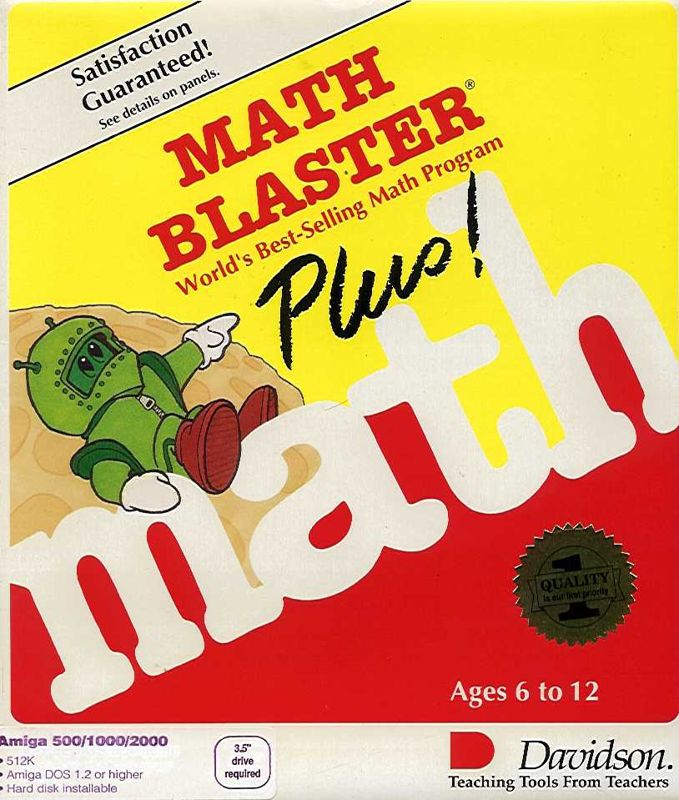
Yet another update came in 1990 as the game was released as New Math Blaster Plus!. This version featured a brand new set of mini games, much better graphics and an overall better presentation. It didn't have much in the way of an narrative though, which would soon be fixed.
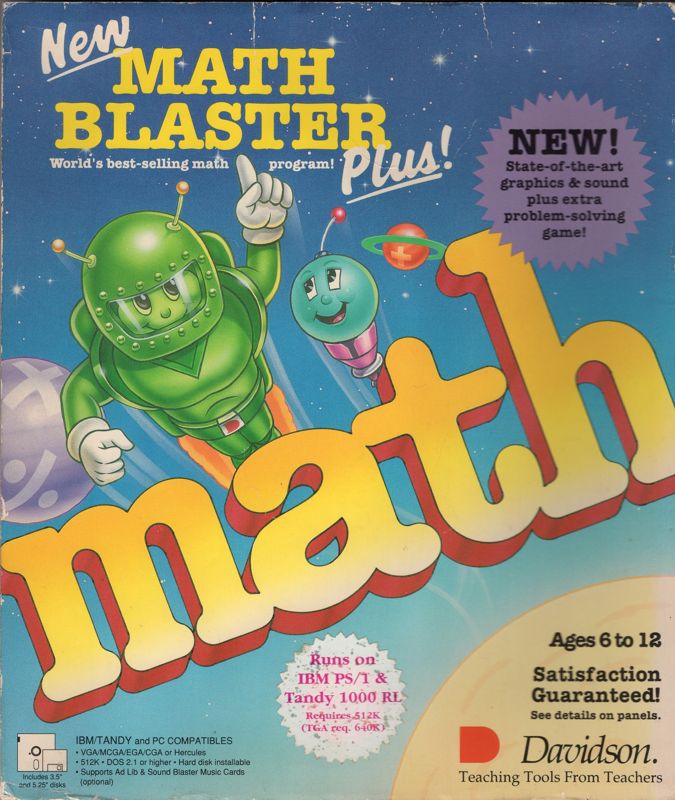
The classic Blasternaout era: 1993 - 1998
Math blaster was releasad yet again in 1993 as Math Blaster Episode I: In Search of Spot. And unlike the earlier games this one also gave you motivation for completing the challenges it presented in the form of an plot. The Blasternauts robotic buddy Spot has been kidnapped by a trash alien and has to go and save him in a series a math themed challenges. It also introduced a third character known as the "Galactic Commander" (GG) and her and Spot would go on to become regular characters in the series alongside the Blasternaut.

The existence of an Episode 1 would of course imply that an episode 2 was also being worked on. This game would arrive in 1994 and be known as
Math Blaster Episode II: Secret of the Lost City. In this game, the trio are searching for the titular lost city only to have their ship shot down by the evil Dr. Minus, and has to unlock the secrets of the city in yet another series of math themed challenges in order to stop him for good. Designed for slightly older kids than the previous games. It was also the first and only game to have the characters as CG.
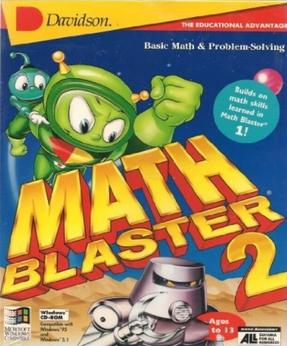
In 1996, another new game in the series would arrive in the form of Math Blaster Jr. As suggested by its name, this was made for pre-schoolers and didn't really have a plot. Being more of a math themed activity center featuring younger versions of the main characters.
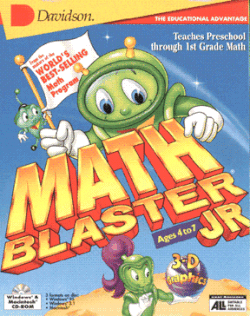
The same year as Jr was released the main math blaster game was updated yet again and released as Mega Math Blaster. While the basic plot was the same (The Blasternaut having to save Spot from some alien, this time a slime monster) the graphics where updated, new mini games were added and a lot 90s "attitude" was present.
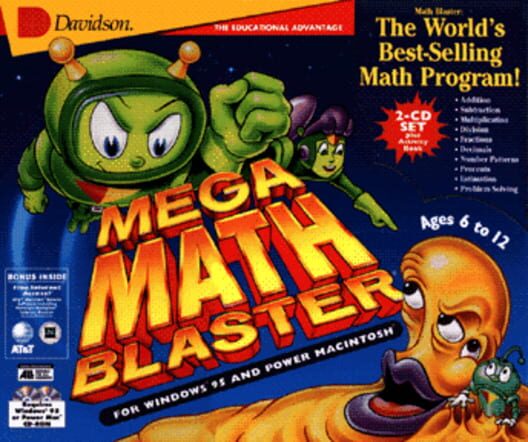
In 1997; Davidson & Associates decided to "unify" their edutainment lineup by having them target a very specific age group. The first of these to affect math blaster was released the same year as Math Blaster: Ages 9–12. A "reimagining" of episode 2, like Mega it told the same basic story as its predecessor by having the blasters ship crash on an unknown planet and having to use their wits in order to escape in yet more math themed challenges. Being relatively recent games, Jr and Mega was also repackaged the following year as Math Blaster: Ages 4–6 and Math Blaster: Ages 6–9 respectively.
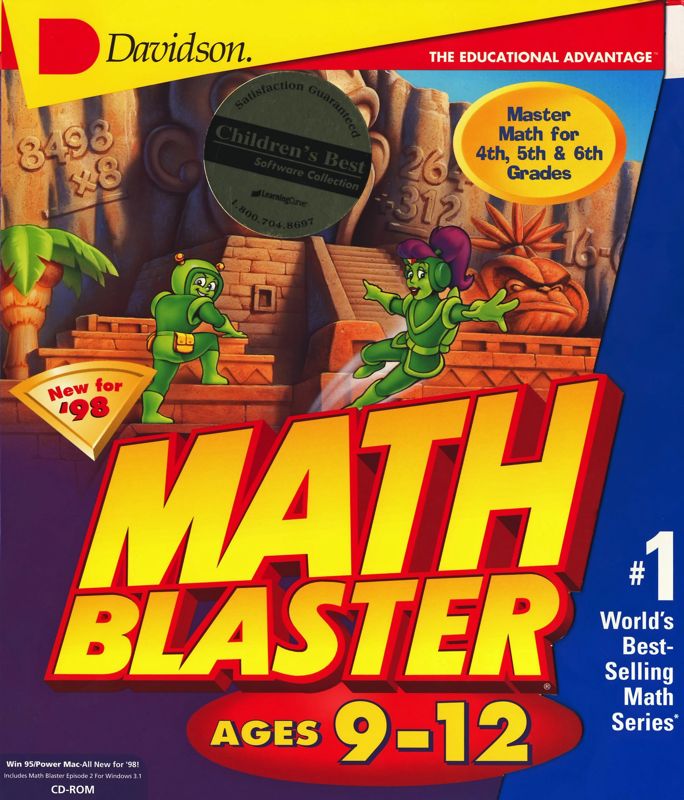

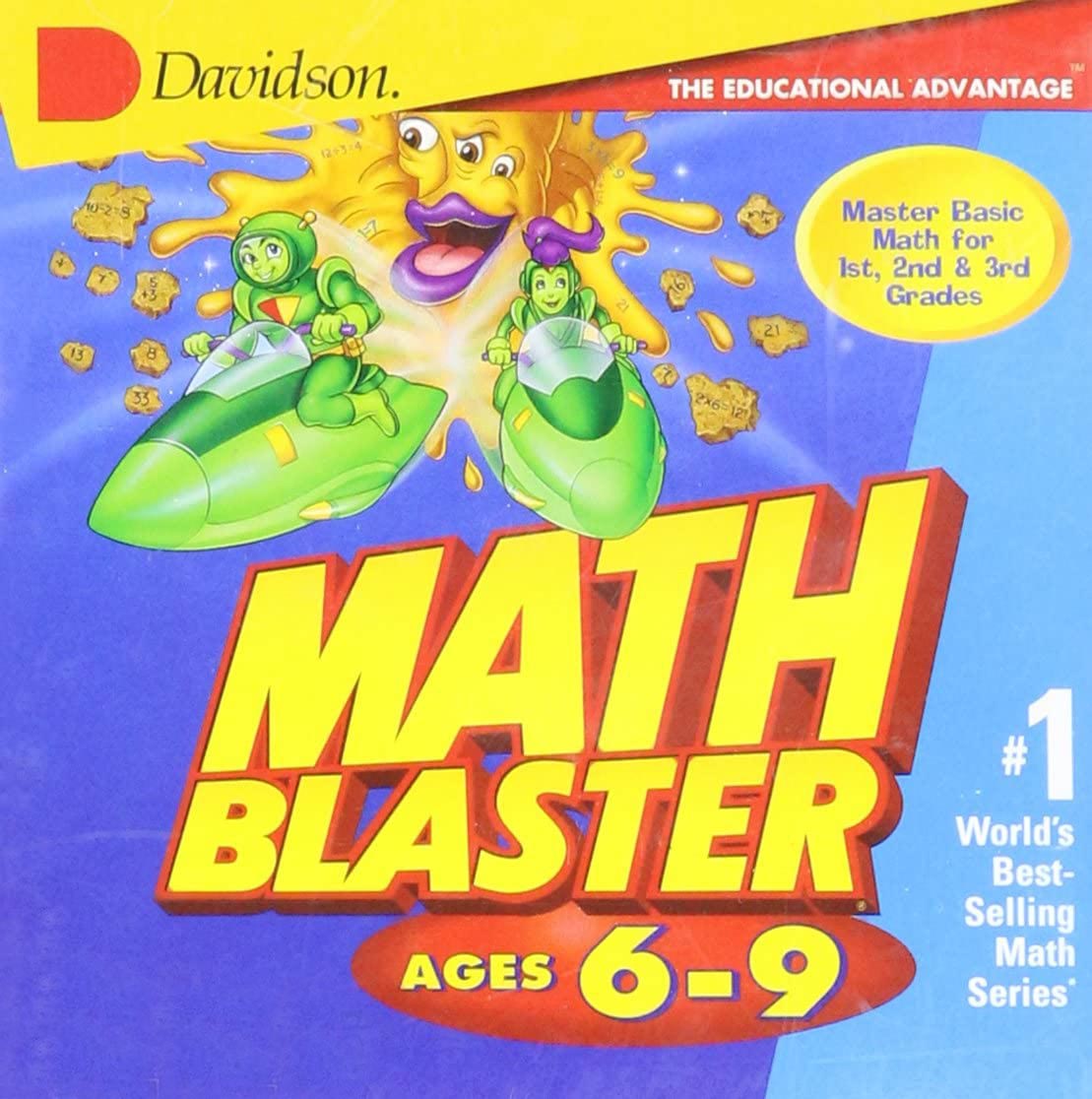
(Continued below)
I was one of those kids and a while back i felt like experiencing some nostalgia and tried to track down what game in the series i played back then, and it was then i learned that it wasn't as easy as i first thought. To say that the series has a "messed up" release history is an understatement and after doing a lot of research i decided to share my findings in case anyone would be interested in reading about them.
Now, lets start. (Note that this will only cover the mainstream PC Math Blaster series up until the year 2000, as beyond that had no interest in it. I am also not covering its various spin offs such as Reading Blaster and Alge blaster, with one notable exception as detailed below)
The early years: 1983-1990
The original Math Blaster was released in 1983 for the Apple ii, DOS and a bunch of other systems. It was a simple mini game collection where you ran around completing math themed challenges as an featureless man.

The game was given an update in 1987 and released as Math blaster plus!. This version featured a new set of challenges and the featureless man of the original became green alien known as the Blasternaut. It was otherwise mostly the same game though (Sadly couldn't find any better video of it)

Yet another update came in 1990 as the game was released as New Math Blaster Plus!. This version featured a brand new set of mini games, much better graphics and an overall better presentation. It didn't have much in the way of an narrative though, which would soon be fixed.

The classic Blasternaout era: 1993 - 1998
Math blaster was releasad yet again in 1993 as Math Blaster Episode I: In Search of Spot. And unlike the earlier games this one also gave you motivation for completing the challenges it presented in the form of an plot. The Blasternauts robotic buddy Spot has been kidnapped by a trash alien and has to go and save him in a series a math themed challenges. It also introduced a third character known as the "Galactic Commander" (GG) and her and Spot would go on to become regular characters in the series alongside the Blasternaut.

The existence of an Episode 1 would of course imply that an episode 2 was also being worked on. This game would arrive in 1994 and be known as
Math Blaster Episode II: Secret of the Lost City. In this game, the trio are searching for the titular lost city only to have their ship shot down by the evil Dr. Minus, and has to unlock the secrets of the city in yet another series of math themed challenges in order to stop him for good. Designed for slightly older kids than the previous games. It was also the first and only game to have the characters as CG.

In 1996, another new game in the series would arrive in the form of Math Blaster Jr. As suggested by its name, this was made for pre-schoolers and didn't really have a plot. Being more of a math themed activity center featuring younger versions of the main characters.

The same year as Jr was released the main math blaster game was updated yet again and released as Mega Math Blaster. While the basic plot was the same (The Blasternaut having to save Spot from some alien, this time a slime monster) the graphics where updated, new mini games were added and a lot 90s "attitude" was present.

In 1997; Davidson & Associates decided to "unify" their edutainment lineup by having them target a very specific age group. The first of these to affect math blaster was released the same year as Math Blaster: Ages 9–12. A "reimagining" of episode 2, like Mega it told the same basic story as its predecessor by having the blasters ship crash on an unknown planet and having to use their wits in order to escape in yet more math themed challenges. Being relatively recent games, Jr and Mega was also repackaged the following year as Math Blaster: Ages 4–6 and Math Blaster: Ages 6–9 respectively.


(Continued below)
Last edited:















